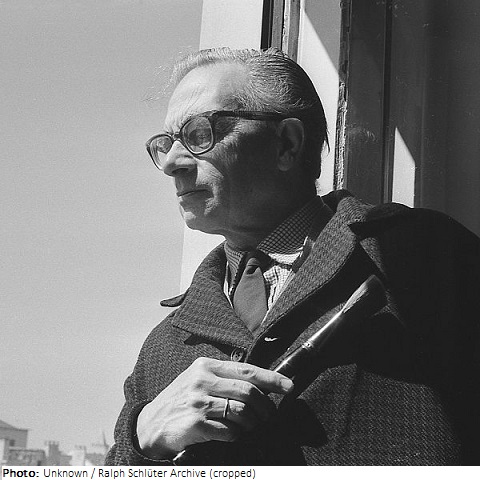Carlos Botelho

Biographical information
| Roles | Competed in Olympic Games (non-medal events) |
|---|---|
| Sex | Male |
| Full name | Carlos António Teixeira Basto•Nunes Botelho |
| Used name | Carlos•Botelho |
| Born | 18 September 1899 in Lisboa, Distrito de Lisboa (POR) |
| Died | 18 August 1982 (aged 82 years 11 months) in Lisboa, Distrito de Lisboa (POR) |
| NOC |  Portugal Portugal |
Biography
As a painter, illustrator, cartoonist and satirist Carlos Botelho was one of the most important Portuguese artists of his generation. The child of musicians, he attended art school in Lisboa, but quit before graduating and remained largely an autodidact. From 1926-29, he drew comics in the children’s weekly ABCzinho and in 1928, he started a satirical comic page for the weekly Sempre Fixe. This cooperation lasted for 22 years continuously.
A visit to Paris in 1929 brought Botelho to painting. In 1930, he set up his first studio in Lisboa, in the residence of his wife, a teacher. The location of this house in the old town, where he lived until 1949, also influenced his choice of artistic subjects. During this period, he was part also of a team of decorators who designed the official Portuguese pavilions at major exhibitions for the National Information Secretariat (SNI), such as the “small” World’s Fair “Arts et Techniques dans la Vie Moderne” in Paris (1937), the International Exhibitions in New York and San Francisco (1939) and the World’s Fair in Lisbon (1940). Therefore, Botelho spent six months in the USA in 1939.
In 1937, he became more familiar in Paris with the work of van Gogh, which strongly influenced him and gave his work an expressionist orientation in the early years. In 1949, he moved to his own house in Buzano, near Lisboa, but returned to the center of the city in 1955. In 1969, Botelho retired from the SNI after almost 30 years.
The motifs of his paintings were urban landscapes, mainly of Lisboa but also of other cities in Europe and the United States that he got to know. As a contrast to his humorous works, he also devoted himself to social themes and painted, for instance, acrobats, blind people and fishermen. Eventually, he added portraits of family members.
With time, Botelho turned away from his expressionist-influenced style and approached abstraction in the 1950s, for example in the formal structuring of urban landscapes. He exhibited, amongst others, at several biennials in Venice and São Paulo.
At the Olympic Art Exhibition in Helsinki in 1952, Botelho presented three oil paintings: The Quays of Belém are shown in the catalog. Candidates for his Snow on the Serra da Estrela - created in 1938 according to the catalog – are the paintings Serra da Estrela and Untitled (both in oil on wood). These are dated, however, from 1933. The Serra da Estrela (Star Mountains) is with almost 2,000 m the highest mountain range of the Portuguese mainland. It is also home to the country’s only ski resort.
Results
| Games | Discipline (Sport) / Event | NOC / Team | Pos | Medal | As | |
|---|---|---|---|---|---|---|
| 1952 Summer Olympics | Art Competitions |  POR POR |
Carlos Botelho | |||
| Painting, Open (Olympic (non-medal)) | ||||||
| Painting, Open (Olympic (non-medal)) | ||||||
| Painting, Open (Olympic (non-medal)) |